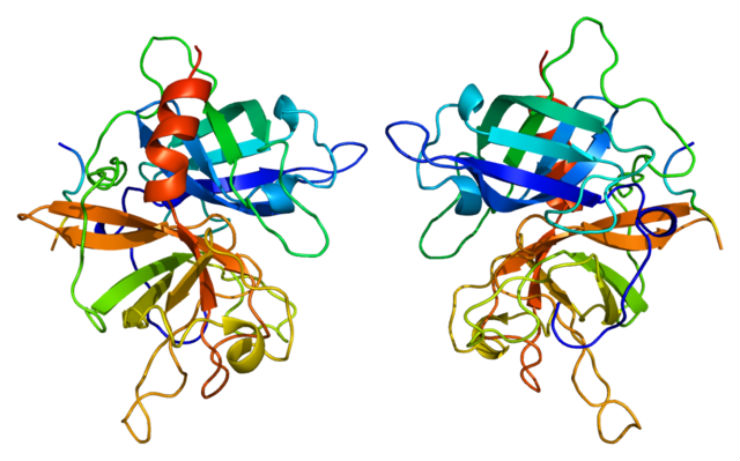- About 25% to 30% of ischemic strokes occur during sleep.
- Tissue-plasminogen activator is the only specific stroke treatment proven effective in large randomized trials.
- Without knowledge of exact time of symptom onset, this large group of patients is excluded from treatment with tissue-plasminogen activator.
- Clinical and imaging studies suggest that many wake-up strokes occur close to awakening and these patients might be within the approved time-window for thrombolysis upon arrival at the ED.
Pharmacologic Treatment
Care of stroke patients was revolutionized by the introduction of tissue-plasminogen activator (TPA, alteplase). However, treatment guidelines require that TPA only be administered within the golden window, which is the period of 2 hours following the stroke. Tissue plasminogen activator therapy within 2 hours of stroke onset is clearly the gold standard of stroke treatment.
However, in many cases the exact time of stroke onset is unknown. If the time of stroke occurrence is unknown or the patient was asleep when the stroke occurred (wake-up stroke; WUS), the patient will be denied TPA treatment. Researchers have described a variety of techniques for improving outcomes in patients treated outside the 2-hour window or at an unknown period following the stroke.
Several imaging approaches are suggested to identify WUS patients likely to benefit from thrombolysis, including non-contrast CT, CT-perfusion, penumbral MRI, and the recent concept of diffusion weighted imaging-fluid attenuated inversion recovery (DWI-FLAIR).
Recent studies have suggested that the actual onset time of wake-up stroke is close to the wake-up time. Furthermore, advanced imaging technologies may enable clinicians to identify patients with favorable risk-benefit profiles for thrombolysis outside of the golden window.
Is the Golden Window Golden?
A large study published in the Journal of Stroke and Cerebrovascular Diseases, the official journal of the National Stroke Association, concluded that 25% to more than 30% of ischemic stroke patients suffer a WUS. The condition of these patients has been observed to deteriorate to outcomes similar to those of patients whose stroke occurred while they were awake (SWA). Although WUS patients are typically excluded from time-dependent acute interventions, these “patients may benefit from acute intervention to prevent this worsening natural history,” the researchers concluded.
In this study, the researchers analyzed 17,398 patients with ischemic stroke from the International Stroke Trial. They compared both presentations and outcomes between the WUS and SWA groups. Severity was assessed by level of consciousness, Oxfordshire Community Stroke Project (OCSP) stroke classification, number of neurologic deficits, and predicted probability of dependency or death. Outcomes were assessed at day 14 and at 6 months.
Wake-up stroke represented 29.6% of all ischemic strokes. More severe OSCP stroke type (total anterior circulation syndrome) was less common in WUS. Although more patients with WUS were alert at presentation with a lower predicted probability of dependency, the 14-day mortality rates and rates of poor outcome at 6 months were similar between the 2 groups.
Thrombectomy with Stent Retrievers
A 2015 report published in the Journal of Neurointerventional Surgery described a multicenter retrospective analysis of consecutive patients with WUS who underwent thrombectomy with stent retrievers Trevo (Stryker, Kalamazoo, Michigan, USA) and Solitaire FR (Covidien, Dublin, Ireland), or primary aspiration thrombectomy.
The study included 52 patients; 46 (88%) of whom were treated with stent retrievers and 6 (12%) of whom were treated with primary aspiration thrombectomy alone. Successful recanalization (Thrombolysis in Cerebral Infarction [TICI] 2b/3) was achieved in 36 (69%) patients.
Outcome was favorable (defined as a modified Rankin Scale score of 0-2) at 3 months in 25 (48%) patients. “Duration of intervention <30 min and its success, defined as TICI 2b/3 recanalization, were strong predictors of favorable clinical outcome at 90 days (P<0.001 and P<0.0001, respectively), the researchers wrote.
“Our study indicates that endovascular treatment of WUS with stent retrievers and aspiration thrombectomy is safe and effective,” they concluded.
However, the authors of a previous retrospective analysis published in 2013 in the Journal of Neuroradiology had concluded that “Despite successful and rapid recanalization with stent-retriever devices, good clinical outcome in patients with wake-up stroke is achieved in a minority of patients. Clinical outcome remains poor. Bleeding rates were higher compared with recanalization procedures within 6 hours after stroke onset.”
Time-Resolved Magnetic Resonance Angiography
A small study (n=19) published in 2015 in the journal Academic Radiology examined the utility of time-resolved magnetic resonance angiography (MRA) for the assessment of vessel morphology and for the feasibility of perfusion. Time-resolved MRA is the fastest available MR sequence technique for vessel assessment.
“Time-resolved MRA resulted in the diagnosis of large vessel disease in 14 of 19 patients, involving the internal carotids (n = 4), the vertebral arteries (n = 3), and the circle of Willis (n = 10). All severe vascular pathologies which influence patients' acute stroke therapy were obtained by time-resolved MRA. Overestimation of stenoses in two of 14 patients resulted in sensitivity and specificity of 100% and 71%, respectively,” the researchers reported.
This team concluded that “Time-resolved MRA is a valuable technique in patients with WUS with high sensitivity and high negative predictive value. Cerebral perfusion estimation can be performed in selected cases for therapy decision but can be hampered by patient movement.”
